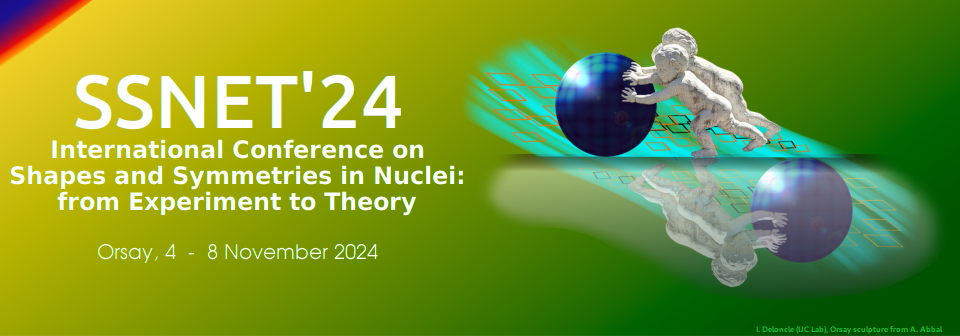Présidents de session
Session 15: Various topics 1
- Andrew Stuchbery (ANU, Canberra, Australia)
Present status and perspectives of the superheavy element (SHE) research at RIKEN are presented. In April 2018, we formed the new SHE Research Group (nSHE RG) and started an experiment to synthesize a new element 119 in the 248Cm(51V,xn)299–x119 reaction using GAs-filled Recoil Ion Separator II (GARIS-II) at RIKEN Ring Cyclotron [1]. The 248Cm target material was supplied from Oak Ridge...
The rotation of deformed nuclei generates easily recognizable patterns of excited nuclear states, called rotational bands. If the nucleus has axial asymmetry, the rotational bands are more complex, for instance, in addition to the ground-state band of an even-even nucleus, excited gamma bands are created. These sets of bands are formed because the nucleus rotates simultaneously around its...
Absolute transition strengths between excited states yield fundamental information on nuclear structure. These observables can be determined from level lifetimes. The recoil distance Doppler-shift (RDDS) technique employing so-called plunger devices provides a valuable method for the determination of lifetimes in the picosecond range and has been in the focus of our Cologne group since many...
Octupole phonon excitations on the shell-model states in Xe, Cs, and Ba isotopes up to mass 142
Large-scale nuclear shell-model calculations are performed in Xe, Cs, and Ba isotopes up to mass 142 (Z > 50 and N > 82) beyond 132Sn. All the single-particle levels in the one-major shells, six neutron (1f7/2, 2p3/2, 2p1/2, 0h9/2, 1f5/2 and 0i13/2) orbitals and five proton (0g7/2, 1d5/2, 1d3/2,...
Neutron-rich nuclei and their 𝛽 decays play an essential role in reactor physics. The spectra of escaping antineutrinos produced in 𝛽 decay of these nuclei show 6-10% discrepancies above and below modern theoretical predictions. This Reactor Antineutrino Anomaly (RAA) was previously suggested as evidence for hypothetical sterile neutrinos however recent evidence point towards deficiencies...
The structure of the neutron-rich Zn isotopes was studied via beta-decay, Coulomb excitation, beam fragmentation and multi-nucleon transfer experiments. In most of the cases, states with spins below 6 ћ were populated except for 78Zn. The semi-magic nickel isotopes present a spherical ground-state structure. However, for N<40 Ni isotopes, low-lying 0+ states were understood as proton or...

